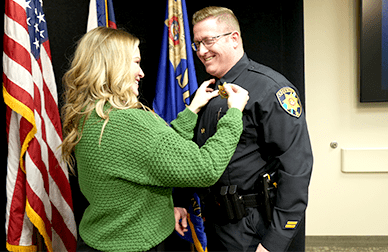Sexting Dangers
Sexting is dangerous for teens because it’s illegal and can have life-long consequences. Still, studies show two out of ten teens have taken naked pictures of themselves and emailed or texted them to others, according to Psychology Today.
There’s no going back
Teens, with just one click, you can send a picture of yourself. But once it’s out there, there’s no going back. The receiver will probably share it with their friends, who may share it again. Someone may be vindictive and post in on social media. Wherever it goes, it’s long gone and out of your control. Worse yet, if they tag you or include your name on the photo, future friends, college administration officials, employers, everyone, can see that picture over and over and over.
It’s a crime
Most teens admit they don’t think about the legal ramifications or consequences of their actions. That’s bad news because it’s illegal. In Colorado, if a minor takes naked pictures of themselves, they’ve committed a felony offense. Everyone who looks at that picture also commits a crime. Teens who sext can be charged with sexual exploitation of a child, internet sexual exploitation of a child or even child pornography.
Naked pictures of minors are a felony called child pornography. The teen who takes the picture of themselves has committed a crime and so does everyone who looks at that picture.
One thing leads to another
Studies show that teens who sext are more likely to engage in sexual behavior. Another danger – someone can use the photos to bully, embarrass and blackmail the teen.
Protect your kids and young adults
Kids have been known to sext in middle school. So, spend time talking with them early about the dangers and consequences of sexting.
Here are tips from the National Center of Missing and Exploited Children:
- Talk to your kids, even if the issue hasn’t directly impacted your community. “Have you heard of sexting?” “Tell me what you think it is.” For the initial part of the conversation, it is important to first learn what your child’s understanding is of the issue and then add to it an age appropriate explanation.
- Use examples appropriate for your child’s age. For younger children with cell phones who do not yet know about sex, alert them that text messages should never contain pictures of people–kids or adults–without their clothes on, kissing or touching each other in ways that they’ve never seen before. For older children, use the term “sexting” and give more specifics about sex acts they may know about. For teens, be very specific that “sexting” often involves pictures of a sexual nature and is considered pornography.
- Make sure kids of all ages understand that sexting is serious and considered a crime. In all communities, if they “sext”, there will be serious consequences, quite possibly involving the police, suspension from school, and notes on the sexter’s permanent record that could hurt their chances of getting into college or getting a job.
- Experts have noted that peer pressure can play a major role in the sending of texts, with parties being a major contributing factor. Collecting cell phones at gatherings of tweens and teens is one way to reduce this temptation.
- Monitor headlines and the news for stories about “sexting” that illustrate the very real consequences for both senders and receivers of these images. “Have you seen this story?” “What did you think about it?” “What would you do if you were this child?” Rehearse ways they can respond if asked to participate in inappropriate texting.
- Encourage school and town assemblies to educate parents, teachers and students.




